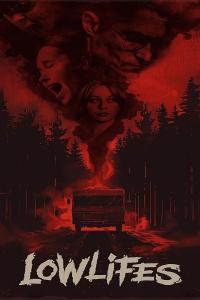Torrent details for "Wales - Land of the Wild S01 complete (1280x720p HD, 50fps, soft Eng subs) " Log in to bookmark
Controls:
Language:
 English
EnglishTotal Size:
8.46 GB
Info Hash:
9d1630930e9e45ab1cec54d010458873aee6ff66
Added By:
Added:
07-12-2019 22:33
Views:
1,101
Health:

Seeds:
0
Leechers:
0
Completed:
35
Wales - Land of the Wild S01 complete (1280x720p HD, 50fps, soft Eng subs)
Filmed over a year, this series captures Wales's varied wildlife and stunning landscapes, from the rugged mountains of the north to the seabird colonies off the west coast.
E01
It is the first day of spring in Wales but winter has a sting in its tail as the country is blanketed with snow. These are challenging times for wildlife such as the Carneddau pony, an ancient breed which lives on the tops of Snowdonia’s highest peaks. The mares are about to give birth, but they need spring to arrive, and fast.
As the sun returns and strengthens, Wales’s wildlife begins to stir. Adders head off on the hunt, dippers begin nest-building and black grouse – one of Wales’s rarest creatures – fight for the right to mate. The warmth brings new life too as Snowdonia’s wild ponies give birth. The herd’s stallion has his work cut out. The breeding season is underway and he must protect his mares from rival males.
In April, it is time for other species to begin mating. On the north coast near the Dee Estuary, is a very special habitat which is home to the endangered natterjack toad. The male toads must sing loud and long in order to attract a female.
In Cardiff, the great crested grebes – arguably one of the country’s most flamboyant and beautiful water birds – are courting. The birds rekindle their relationship with a dance, exchanging gifts of pondweed and renewing their bonds before the hard work of nest building and egg laying gets underway.
In early May in an ancient deer park in west Wales, two newborn badgers make their first foray above ground. Though badgers are social animals, older animals have been known to kill young cubs which step out of line, so their mother is protective and cautious.
In spring, the island of Skokholm, four miles off the coast of Pembrokeshire, welcomes some iconic visitors: ten thousand puffins. For the last eight months, they have been far out at sea, but now they have returned to the island to breed. They head to the exact same burrow they used the previous year. But not everyone has made it back. Puffins pair for life, but at the end of last summer they separated and spent the winter apart, foraging alone in the open ocean. It’s only now that some discover that their partner hasn’t made it through the long, stormy winter and the clifftops are full of lonely puffins.
After a freezing start, spring has warmed rapidly and in mid-May temperatures are soaring. The dunes of Ynys Las just north of Aberystwyth on the west coast are one of Wales’s most extreme environments - dry, hot and desert-like. This is the home of the sand lizard, a very rare reptile found in only a handful of places along the coast. One male risks all in his quest to find a partner. But there is another animal hunting in the dunes – a grass snake.

E02
It’s the middle of spring and the brightest and loveliest time of year in Wales. This should be the best of times for wildlife, but the race to breed is on and predators are on the hunt.
Just off the western tip of Pembrokeshire lies the seabird haven of Skokholm. Deep in the island’s burrows, new life is stirring as young pufflings hatch. As well as 30,000 puffins, the rich waters around the islands attract many other breeding seabirds such as razorbills, guillemots, fulmars and gulls. But by far the most abundant bird here is the Manx shearwater. They are arguably Wales’s most important bird – half of the world population of the species nests on Skokhom and the nearby islands of Skomer and Middleholm.
Some parts of Wales are very crowded. But among the towns and industrial estates there are surprising oases of wildlife. Half a mile away from the mining town of Aberbargoed is a wildflower meadow. In early June, orchids are rich in nectar which attracts marsh fritillaries, one of Wales’s rarest butterflies.
E03
It is June and Wales is at the start of one of the hottest – and driest – summers in a generation. This should be the most bountiful time of year, but for wildlife this summer proves to be more challenging than most.
Gronant beach in north Wales is home to Wales’s last colony of 350 little terns. The females spread out across the beach, choosing isolated patches of sand in which to lay perfectly camouflaged eggs, but June’s highest tide presents a threat and one tern family has a narrow escape when they are caught unawares, while the warm, sheltered waters of west Wales play host to a gathering of tens of thousands of crabs as they prepare to moult.
With the heatwave breaking records, the hot dry weather takes its toll across the Welsh countryside. Little remains of once-lush meadows, but for tiny harvest mice, one of the UK’s smallest mammals, a small clump of grass is enough to make a home. Harvest mice eat a range of seeds and berries, but their tiny size means they need to eat 30 per cent of their body weight a day. In late summer, it’s harvest time, and these tiny mammals face unnatural dangers as their grassy homes come under threat.
Cwm Colliery was once one of the biggest mines in Wales and 200 years of industry have left a surprisingly wild legacy. The abandoned spoil heaps are heat absorbent and free draining. They are, in effect, the sand dunes of the Welsh Valleys, providing a much-needed refuge for insects such as the green tiger beetle, one of Wales’s top predators.
On Ramsay Island in late August, the remote beaches are full of female grey seals, who come ashore to give birth. After just 20 days, they must abandon their pups in order to feed themselves, so the more experienced mothers try and get their youngsters used to the water early on.
E04
Around half of all British breeding goshawks live in Wales, and they are thriving in woodlands across the country. In a forest in the Black Mountains in Monmouthshire, a female goshawk hunts grey squirrels in a walnut grove.
In mid-September in south Wales, the long, hot summer has produced a bounty of food including ivy flowers, which are a vital food source for a host of insects, one of which is the ivy bee. They live for only six weeks and September is the peak of their breeding season.
A mile offshore the Pembrokeshire coast is Ramsay Island where female grey seals and their pups relax in the late season sunshine. Seals spend most of their time in the water, but for a few weeks they come ashore to give birth, and Ramsay is the largest breeding colony in southern Britain.
As winter sets in, the snow-covered fields attract flocks of starlings. As the light begins to fade, it’s time to find a place to roost and they head to the coast where temperatures are milder. Small feeding flocks join together and Aberystwyth becomes the stage for the season’s greatest wild spectacle, a murmuration, 50,000 strong.
The programme also features the red kite, a species which is synonymous with Wales, but who were almost driven to extinction, with just a handful of breeding pair were left in mid-Wales in the 1990s.
First broadcast: April 2019
Duration: 1 hour per episode
Torrent dead? Request reseed at torrentgalaxy.org - or ask at elsonroa at tutanota.com
Filmed over a year, this series captures Wales's varied wildlife and stunning landscapes, from the rugged mountains of the north to the seabird colonies off the west coast.
E01
It is the first day of spring in Wales but winter has a sting in its tail as the country is blanketed with snow. These are challenging times for wildlife such as the Carneddau pony, an ancient breed which lives on the tops of Snowdonia’s highest peaks. The mares are about to give birth, but they need spring to arrive, and fast.
As the sun returns and strengthens, Wales’s wildlife begins to stir. Adders head off on the hunt, dippers begin nest-building and black grouse – one of Wales’s rarest creatures – fight for the right to mate. The warmth brings new life too as Snowdonia’s wild ponies give birth. The herd’s stallion has his work cut out. The breeding season is underway and he must protect his mares from rival males.
In April, it is time for other species to begin mating. On the north coast near the Dee Estuary, is a very special habitat which is home to the endangered natterjack toad. The male toads must sing loud and long in order to attract a female.
In Cardiff, the great crested grebes – arguably one of the country’s most flamboyant and beautiful water birds – are courting. The birds rekindle their relationship with a dance, exchanging gifts of pondweed and renewing their bonds before the hard work of nest building and egg laying gets underway.
In early May in an ancient deer park in west Wales, two newborn badgers make their first foray above ground. Though badgers are social animals, older animals have been known to kill young cubs which step out of line, so their mother is protective and cautious.
In spring, the island of Skokholm, four miles off the coast of Pembrokeshire, welcomes some iconic visitors: ten thousand puffins. For the last eight months, they have been far out at sea, but now they have returned to the island to breed. They head to the exact same burrow they used the previous year. But not everyone has made it back. Puffins pair for life, but at the end of last summer they separated and spent the winter apart, foraging alone in the open ocean. It’s only now that some discover that their partner hasn’t made it through the long, stormy winter and the clifftops are full of lonely puffins.
After a freezing start, spring has warmed rapidly and in mid-May temperatures are soaring. The dunes of Ynys Las just north of Aberystwyth on the west coast are one of Wales’s most extreme environments - dry, hot and desert-like. This is the home of the sand lizard, a very rare reptile found in only a handful of places along the coast. One male risks all in his quest to find a partner. But there is another animal hunting in the dunes – a grass snake.

E02
It’s the middle of spring and the brightest and loveliest time of year in Wales. This should be the best of times for wildlife, but the race to breed is on and predators are on the hunt.
Just off the western tip of Pembrokeshire lies the seabird haven of Skokholm. Deep in the island’s burrows, new life is stirring as young pufflings hatch. As well as 30,000 puffins, the rich waters around the islands attract many other breeding seabirds such as razorbills, guillemots, fulmars and gulls. But by far the most abundant bird here is the Manx shearwater. They are arguably Wales’s most important bird – half of the world population of the species nests on Skokhom and the nearby islands of Skomer and Middleholm.
Some parts of Wales are very crowded. But among the towns and industrial estates there are surprising oases of wildlife. Half a mile away from the mining town of Aberbargoed is a wildflower meadow. In early June, orchids are rich in nectar which attracts marsh fritillaries, one of Wales’s rarest butterflies.
E03
It is June and Wales is at the start of one of the hottest – and driest – summers in a generation. This should be the most bountiful time of year, but for wildlife this summer proves to be more challenging than most.
Gronant beach in north Wales is home to Wales’s last colony of 350 little terns. The females spread out across the beach, choosing isolated patches of sand in which to lay perfectly camouflaged eggs, but June’s highest tide presents a threat and one tern family has a narrow escape when they are caught unawares, while the warm, sheltered waters of west Wales play host to a gathering of tens of thousands of crabs as they prepare to moult.
With the heatwave breaking records, the hot dry weather takes its toll across the Welsh countryside. Little remains of once-lush meadows, but for tiny harvest mice, one of the UK’s smallest mammals, a small clump of grass is enough to make a home. Harvest mice eat a range of seeds and berries, but their tiny size means they need to eat 30 per cent of their body weight a day. In late summer, it’s harvest time, and these tiny mammals face unnatural dangers as their grassy homes come under threat.
Cwm Colliery was once one of the biggest mines in Wales and 200 years of industry have left a surprisingly wild legacy. The abandoned spoil heaps are heat absorbent and free draining. They are, in effect, the sand dunes of the Welsh Valleys, providing a much-needed refuge for insects such as the green tiger beetle, one of Wales’s top predators.
On Ramsay Island in late August, the remote beaches are full of female grey seals, who come ashore to give birth. After just 20 days, they must abandon their pups in order to feed themselves, so the more experienced mothers try and get their youngsters used to the water early on.
E04
Around half of all British breeding goshawks live in Wales, and they are thriving in woodlands across the country. In a forest in the Black Mountains in Monmouthshire, a female goshawk hunts grey squirrels in a walnut grove.
In mid-September in south Wales, the long, hot summer has produced a bounty of food including ivy flowers, which are a vital food source for a host of insects, one of which is the ivy bee. They live for only six weeks and September is the peak of their breeding season.
A mile offshore the Pembrokeshire coast is Ramsay Island where female grey seals and their pups relax in the late season sunshine. Seals spend most of their time in the water, but for a few weeks they come ashore to give birth, and Ramsay is the largest breeding colony in southern Britain.
As winter sets in, the snow-covered fields attract flocks of starlings. As the light begins to fade, it’s time to find a place to roost and they head to the coast where temperatures are milder. Small feeding flocks join together and Aberystwyth becomes the stage for the season’s greatest wild spectacle, a murmuration, 50,000 strong.
The programme also features the red kite, a species which is synonymous with Wales, but who were almost driven to extinction, with just a handful of breeding pair were left in mid-Wales in the 1990s.
First broadcast: April 2019
Duration: 1 hour per episode
Torrent dead? Request reseed at torrentgalaxy.org - or ask at elsonroa at tutanota.com















































